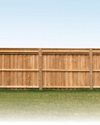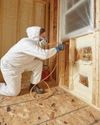
From the buildings and pipelines that make up our cities, to artistic sculptures that bring cold metal to life, welding is everywhere. Learning to weld gives your skill set a serious boost, but gaining the skills to start "laying dimes" (that's a good weld) takes practice. Lots of practice. Gerrilyn Kujawa, a local welder, talked with me about getting started and the steps for making great welds.
CHOOSING A WELDER
Gerrilyn says the $200 MIG welders at home centers are fine for occasional light use, but an inexpensive welder may not be able to tackle thicker material or larger projects. If you want to get serious about welding, plan to spend $400 to $600 for a good machine that will last.
POWER CONSIDERATIONS
To weld thicker material, you need a machine with a higher amp output. A 120-volt by a conventional metal up to 5/16 in. thick. You'll need at least a 20-amp (preferably a 30-amp) circuit.
If you think you'll be working with material thicker than 1/4 in., you'll want a 240-volt machine and a 50-amp circuit to match.
SECONDHAND SAVINGS
Gerrilyn also suggests that beginners look into used equipment; it may allow you to get a better setup for a lower price. Pawn welder, powered outlet, can weld shops and Craigslist are great places to start looking. When purchasing a used machine, always test it. Look inside to see if there are any obviously burnt wires, and check to see if the buttons, knobs, and display function properly.
WELD SAFE!
Welding can be dangerous work, and Gerrilyn takes every safety precaution available.
1 SAFETY GLASSES
Eye protection is a must for all power tool use, and it's especially critical for welding, because hot metal bits are likely to go airborne.
This story is from the July - August 2022 edition of Family Handyman.
Start your 7-day Magzter GOLD free trial to access thousands of curated premium stories, and 9,000+ magazines and newspapers.
Already a subscriber ? Sign In
This story is from the July - August 2022 edition of Family Handyman.
Start your 7-day Magzter GOLD free trial to access thousands of curated premium stories, and 9,000+ magazines and newspapers.
Already a subscriber? Sign In

7 Bicycle Maintenance Tips
Keep your bike in tiptop shape and ride safe!

SETTING FENCE POSTS WITH EXPANDING FOAM
Any fence builder knows you need strong posts for a strong fence, and that means backfilling the postholes with a dense, hard material other than dirt.

PEBBLE MOSAIC STEPPING STONES
COLLECT SOME RIVER ROCK AND MAKE YOUR OWN UNIQUE STEPPINGSTONE PATH

EARTH-FRIENDLY WEED KILLERS
HEALTHIER CHOICES FOR HUMANS AND THE ENVIRONMENT

DIY! HYDROPONIC GARDEN
FRESH VEGETABLES AT YOUR FINGERTIPS

GROW MINI VEGETABLES
GROW A GARDEN IN A TINY SPACE!

BUILD A VERTICAL GARDEN
TIME TO GROW UP!

MODERN WATER FOUNTAINS
A SPLASH OF PEACE FOR YOUR PATIO

9 ALTERNATIVE USES FOR SAWDUST
Every fully stocked wood shop has a table saw. You can usually find a pile of sawdust under it, even if it's used only occasionally. If a shop has a belt sander or band saw, there's probably another pile of finer sawdust under that. Even people without stationary tools have sawdust accumulation on their workbenches.

INSULATE WITH FOAM
IT'S A GREAT ALTERNATIVE TO FIBERGLASS